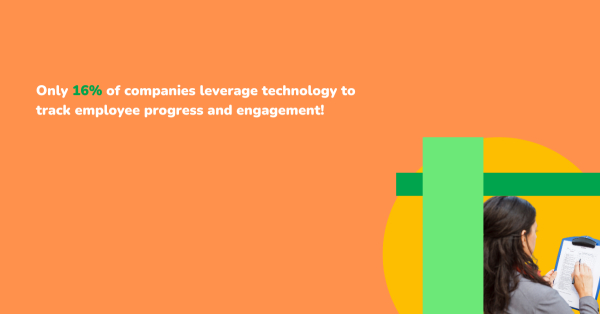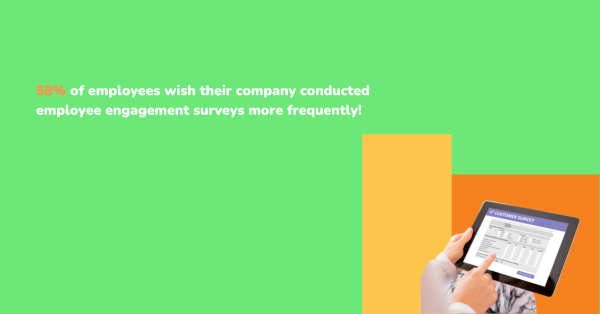You’re constantly looking for ways to boost engagement, employee satisfaction, and retain your best employees, and create a workplace where people genuinely want to stay. But while you may focus on improving processes, updating benefits, or rolling out new initiatives, the one thing that often gets overlooked is simple: listening.
In today’s evolving work environment, listening isn’t passive; it’s a strategy. It signals that you value your people’s insights, concerns, and ideas. When employees feel heard, they’re more likely to trust leadership, align with organizational goals, and contribute at a higher level. In contrast, when voices go unnoticed, disengagement takes root and spreads quickly.
Modern employees expect more than a paycheck. They want a say. They want to be part of something where their enhanced experiences matter and where their input drives meaningful change. And in a world where remote work, hybrid teams, and distributed offices are the norm, the traditional ways of staying in touch with what your people are thinking no longer cut it.
Capturing honest input from your workforce is no longer a “nice to have.” It’s a critical part of shaping culture, optimizing performance, and identifying blind spots before they become major problems. It helps you build a feedback loop, one that isn’t just about collecting opinions, but also about creating conversations and closing the gap between leadership and employees.
More than ever, your role requires great listening. And to do that effectively, you need structured, intentional methods that go beyond gut instinct or hallway chats. You need systems that turn employee voices into data, and that data into action.
This is where a strategic approach to collecting and analyzing employee feedback comes into play. It’s not just about hearing, it’s about understanding. And in today’s workplace, understanding your people isn’t optional. It’s the key to leading well.
The Real Reason Behind Employee Turnover
If you’re struggling with high employee turnover or unexpected departures, you’re not alone. Losing valuable team members can feel like an ongoing challenge that drains time, resources, and morale. But at the heart of this issue often lies something simple yet profound: a lack of genuine communication.
When people leave, it’s rarely just about salary or benefits. It’s often about feeling disconnected, unrecognized, or unheard. You might think you know what’s driving turnover, but without consistent employee feedback, those assumptions can be way off the mark. The truth is, without an effective way to gather honest insights, you’re operating in the dark.
Creating an environment where employees feel comfortable sharing their thoughts requires more than an open-door policy. It demands a reliable feedback system that encourages transparency and trust. When you actively seek employee feedback, you gain a clearer understanding of their satisfaction levels, concerns, and motivations.
Using employee surveys is a strategic way to open that channel. They provide a structured opportunity for people to voice their experiences and opinions safely and anonymously. This direct line of communication helps you identify patterns and issues before they escalate into costly turnover.
Knowing why employee surveys are important means recognizing their role in retention. They empower you to address the root causes of dissatisfaction and disengagement. When employees see that their feedback leads to meaningful change, their loyalty grows stronger, and the reasons to leave diminish.
By neglecting feedback, you risk creating an environment where problems fester unnoticed. Disengaged employees are less productive and more likely to start looking elsewhere. But when you prioritize collecting and acting on employee feedback, you take a significant step toward building a culture that keeps people committed and motivated.
Turnover isn’t just a numbers game, it’s a reflection of your organization’s health. And improving that health starts with listening carefully and responding thoughtfully.
What Makes Feedback Valuable? The Anatomy of a Good Survey

When it comes to collecting feedback, not all approaches are created equal. You might already know that gathering employee input is crucial, but the real challenge lies in making that feedback meaningful and actionable. If your surveys aren’t designed thoughtfully, you risk collecting data that’s either incomplete, misleading, or simply ignored.
The foundation of valuable feedback begins with the survey itself. You want a tool that doesn’t just collect responses but does so in a way that encourages honesty and clarity. When designing or selecting your survey method, consider what kind of questions will truly capture the pulse of your workforce.
First, the questions need to be clear and straightforward. Ambiguous or complex wording can confuse respondents and lead to unreliable answers. You want employees to feel comfortable engaging with the survey rather than frustrated or uncertain. Keep your questions focused and concise to make it easy for people to provide genuine feedback.
Next, a mix of question types can help you gather both quantitative and qualitative insights. Closed-ended questions with rating scales or multiple-choice answers give you measurable data that’s easy to analyze. Meanwhile, open-ended questions allow employees to express thoughts, ideas, or concerns in their own words, adding valuable context and nuance to the numbers.
Another key element is anonymity. You want your people to feel safe sharing their honest opinions without fear of repercussions. When anonymity is guaranteed, feedback tends to be more candid and useful, revealing real challenges and opportunities within your organization.
The timing and frequency of surveys also play a significant role. Too frequent, and employees might experience survey fatigue, leading to lower response rates or less thoughtful answers. Too infrequent, and you risk missing shifts in morale or emerging issues. Striking the right balance keeps feedback fresh and relevant.
In addition to question design, the tools you use matter. Modern employee survey tools are built to simplify the process of crafting surveys, distributing them, and analyzing results. They provide dashboards, trend tracking, and reporting features that turn raw data into actionable insights quickly.
Understanding what makes feedback valuable means recognizing that it’s not just about collecting opinions, but about collecting the right opinions, in the right way. When your surveys are well-crafted, you unlock a powerful resource for improving engagement, addressing concerns, and strengthening your workplace culture.
Remember, effective feedback is the cornerstone of meaningful change. And that begins with a well-designed survey that respects your employees’ time and voices.
Types of Employee Surveys (and When to Use Them)
Understanding the different types of employee surveys and knowing when to use each one can make a significant difference in the quality of feedback you collect. You want to select the right approach that aligns with your goals, so your team’s input truly reflects their experience and helps you make informed decisions.
First, there are engagement surveys. These typically measure overall employee satisfaction, commitment, and motivation. They offer a broad view of how your people feel about their work environment, leadership, and culture. Engagement surveys often provide a foundation for strategic initiatives aimed at improving morale and retention.
Pulse surveys are shorter, more frequent check-ins. They’re designed to capture quick snapshots of employee sentiment on specific topics or after particular events, like a change in management or a new policy rollout. Because pulse surveys are brief, they tend to yield higher response rates and give you timely insights that help you stay connected to your workforce’s current mood.
Onboarding and exit surveys serve distinct purposes. Onboarding surveys help you understand the early experiences of new hires, identifying potential gaps in training, resources, or support. Exit surveys, meanwhile, provide valuable feedback from departing employees, revealing reasons for turnover and areas where you might improve the employee experience.
Diversity, equity, and inclusion (DEI) surveys have become increasingly important as organizations strive to create more inclusive workplaces. These surveys focus on gathering honest feedback about experiences related to fairness, belonging, and respect, which can highlight areas requiring attention or improvement.
Choosing the right survey type depends on what you want to learn and the pace at which you want to learn it. Utilizing employee survey platforms that allow you to customize and deploy different survey types makes this process seamless. They help you organize your feedback efforts strategically and analyze responses effectively.
By selecting and timing these surveys thoughtfully, you create a dynamic feedback ecosystem. This approach not only captures varied perspectives but also demonstrates your commitment to listening, at every stage of the employee journey.
How to Choose the Right Employee Survey Software
Choosing the right employee survey software is a critical step in building an effective feedback process. You want a solution that not only makes it easy to collect employee input but also helps you interpret that data so you can take meaningful action. With so many options available, it can feel overwhelming to find a platform that fits your unique needs.
Start by thinking about what matters most in your feedback process. Ease of use is essential. The software should be intuitive for both administrators and employees. If the interface is confusing or difficult, participation rates can suffer, and your insights may be compromised.
Next, look for features that support customization. Your feedback needs will evolve, so the ability to tailor surveys to specific teams, topics, or timeframes is invaluable. Customization also extends to branding and communications, helping you maintain a consistent tone that encourages honest responses.
Automation capabilities are another key consideration. Automating survey distribution, reminders, and follow-ups reduces your administrative burden and ensures that feedback cycles remain consistent. You want to spend less time managing the process and more time focusing on what the data reveals.
Reporting and analytics tools are where survey software truly proves its value. Look for platforms that offer clear, actionable insights through dashboards, trend analysis, and benchmark comparisons. Being able to quickly identify areas of strength and concern lets you prioritize initiatives that will have the greatest impact.
Privacy and anonymity features are critical to fostering trust. Employees must feel confident that their responses are confidential and that their identities won’t be compromised. Without this assurance, you risk receiving superficial or inaccurate feedback.
Integration capabilities should not be overlooked. If your organization uses HR systems, communication platforms, or data analytics tools, seamless integration can enhance workflow efficiency and enable more comprehensive data analysis.
Lastly, consider the support and training offered by the software provider. You want a partner who helps you maximize the tool’s potential through onboarding, resources, and responsive assistance.
When you choose the right employee survey software, you’re investing in more than just technology, you’re enabling a culture of continuous listening and improvement. This foundation empowers you to gather meaningful employee feedback that drives positive change across your organization.
Measuring the Impact: What to Do With the Feedback

Collecting employee feedback is only the first step. What truly matters is how you use that information to create real change. Without a clear plan for interpreting and acting on the data, feedback can easily become another overlooked task rather than a powerful driver of improvement.
When you receive survey results, your first priority should be to analyze the data thoughtfully. Look beyond the numbers to understand the underlying stories they tell. Trends, patterns, and repeated concerns can point you to areas that need urgent attention. At the same time, positive feedback highlights strengths you can build upon and celebrate.
It’s important to share the insights with your team transparently. When employees see that their voices have been heard and their feedback is valued, trust deepens. This transparency also sets expectations around what can realistically be addressed and helps prevent frustration or skepticism.
After analyzing the data, prioritize the issues that will have the most significant impact on employee engagement and overall performance. Not every concern can be tackled immediately, but focusing on strategic initiatives ensures that efforts are effective and manageable.
Develop clear action plans that specify what will be done, who is responsible, and timelines for progress. This approach demonstrates commitment and accountability, reinforcing that feedback is a catalyst for positive change rather than a checkbox exercise.
Ongoing communication throughout this process is crucial. Keep your workforce updated on progress and invite continued input. This creates a continuous feedback loop and signals that listening is an integral part of your organization’s culture.
Technology can help here, too. Many employee survey tools include features for tracking actions taken based on feedback, allowing you to monitor improvements over time and adjust strategies as needed. These capabilities turn raw data into living insights that evolve with your organization.
Ultimately, the goal is to close the feedback loop, transforming collected opinions into meaningful, visible outcomes. This not only improves employee satisfaction and retention but also strengthens your entire organization.
By treating feedback as a strategic asset, you empower yourself to lead with empathy and insight. And that’s how lasting, positive workplace change begins.
Why OrangeHRM?
Having the right tools to gather and manage employee feedback is essential. OrangeHRM Surveys makes this process seamless, empowering you to listen more effectively and stay ahead of any emerging issues.
With OrangeHRM Surveys, collecting input from your workforce is simpler than ever. The platform offers intuitive survey creation tools that let you design customized questions tailored to your organization’s unique needs. Whether you want quick pulse checks or in-depth engagement assessments, OrangeHRM provides flexible options that fit your feedback goals.
OrangeHRM Surveys equips you with everything you need to create a culture of continuous listening. By making employee feedback easy to collect, analyze, and act upon, it puts you firmly in control of building a stronger, more engaged organization. Book a FREE demo today to see how we can make your employee feedback process seamless!
